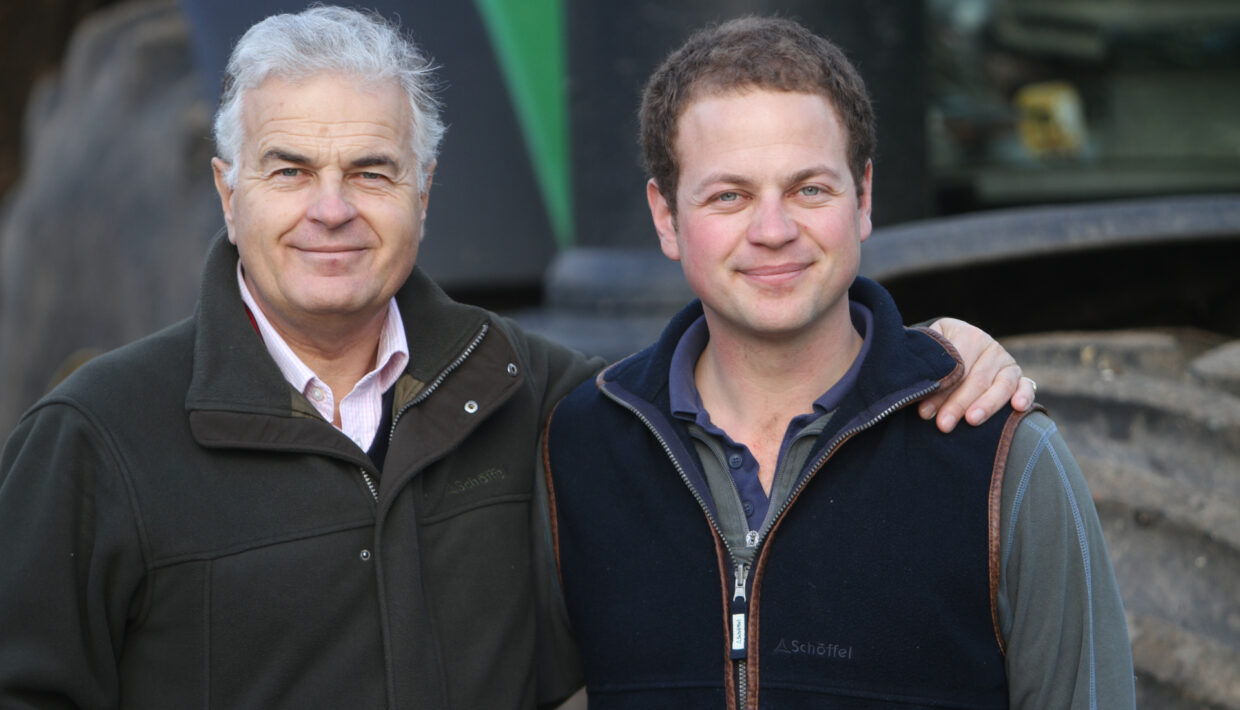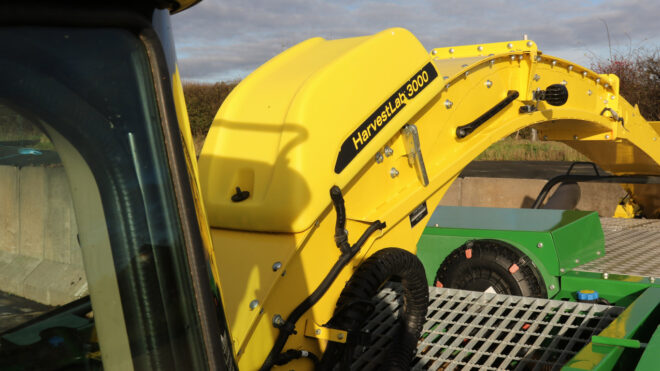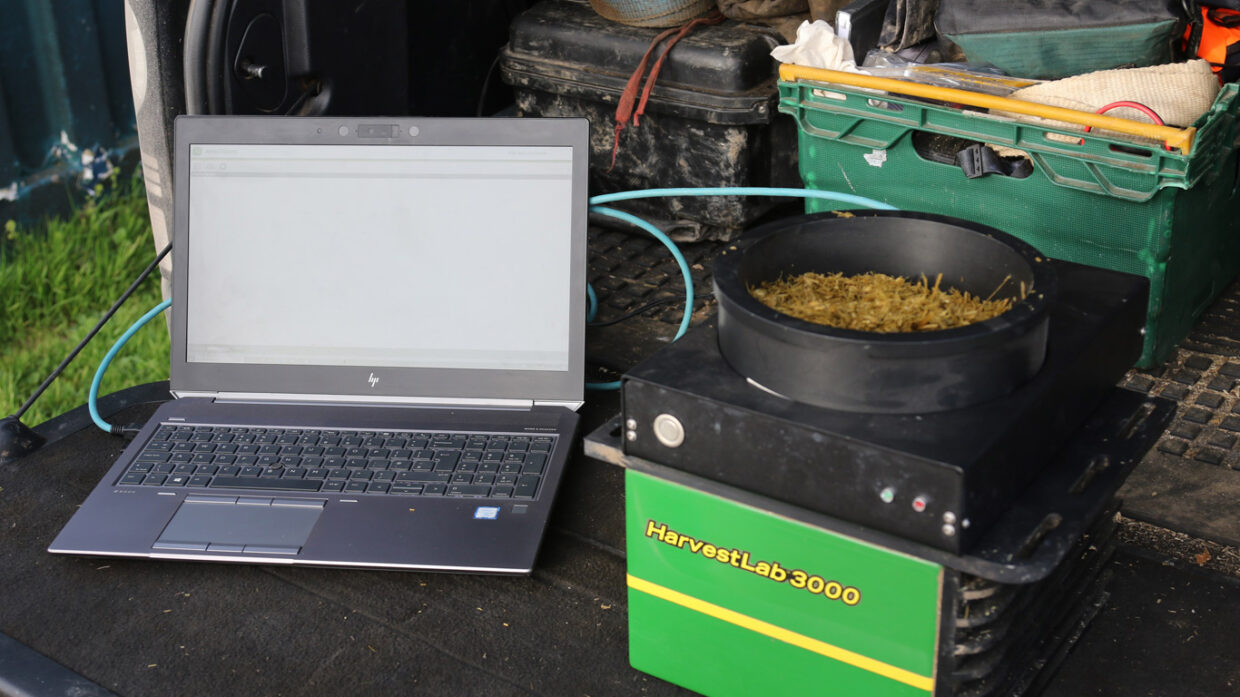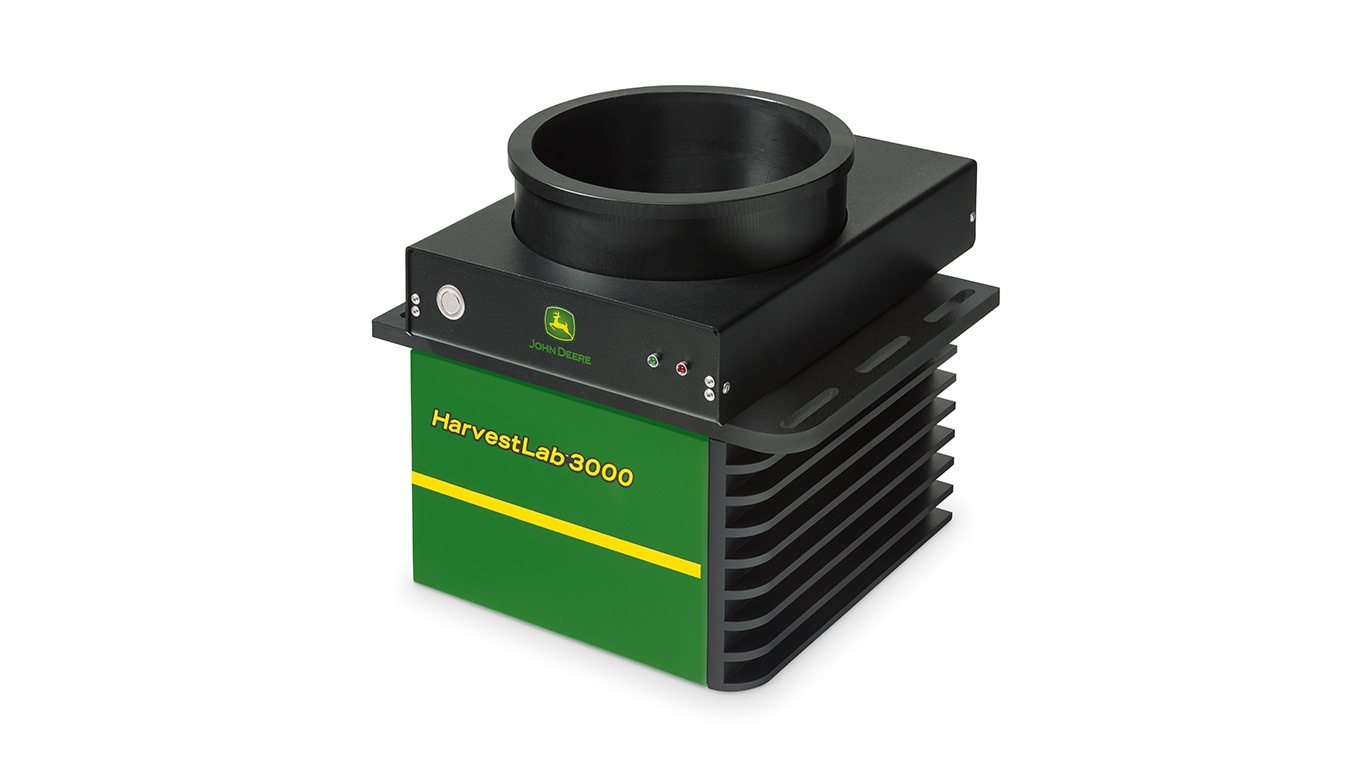In Hampshire, England, Edward du Val and his father Henry have implemented precision technology to meet the efficiency and sustainability demands of green energy. On the 405ha Apsley Farms, they have switched from arable enterprises to entrepreneurial green energy in just eight short years – a feat of dedication and resilience.
Diversification
Breaking ground in November 2011, the first two biodigesters and combined heat and power (CHP) unit were constructed to generate electricity – by Christmas Eve 2012 they were producing 500kw per hour using 230m₃ of biogas.
But by 2013 the business had to re-evaluate its strategy to improve profitability and decided to integrate its electricity production with gas-to-grid generation. “Accessing the grid and the Renewable Heat Incentive (RHI) meant we could secure the future viability of the business,” explains Edward.

Henry (left) and Edward (right) du Val started building the first two biodigesters in 2011.
As part of the conversion, two more biodigesters and a second CHP unit were erected, producing a combined total of 1,100kw of electricity per hour using 505m₃ of biogas. A gas clean-up plant also separates carbon dioxide (CO2) from methane (CH4), cleaning 2,200m₃ of biogas to make 1,200m₃ of biomethane for use in the national grid.
Efficiency is key in sustaining the business and managing the bottom line.
Edward du Val
In 2016, to further improve economic circularity and sustainability of the AD plant, the family built a CO2 capture and liquification plant, to convert waste CO2 into a food grade product for sale into the food and drink sector.
Today the £25m AD plant achieves the governments anticipated return on investment (ROI) of 12% and it has almost reached carbon-negative production. The plant produces enough green energy from five biodigesters and two CHP units to supply gas to around 8,500 homes, plus enough electricity to meet the sites operational demands.
Precision
Producing sustainable green energy is the main objective of the biogas production, to meet the government tariff criteria, explains Edward. “Efficiency is key in sustaining the business and managing the bottom line. But we also must provide quarterly input and output data for sustainability assessment, and undergo an annual audit across the whole operation, including the 40 farms that contract grow biogas crops for us within a 30-mile radius.”
Accurate data is therefore essential, and that’s where near-infrared (NIR) technology and the HarvestLab 3000 sensor come in. “We love our tech and felt this could improve field work and meet the sustainability and record keeping demands,” he adds. “From crop production to AD plant efficiency and logistics – it is an evolving part of our informed decision-making within the business.”
Pre-harvest
The AD plant requires about 3,642ha of crop per annum, which is split equally between high yielding maize and rye varieties – each of which should produce around 250m₃ of biogas per tonne of crop. Dry matter (DM) content is an important element in biogas output, so Edward aims to harvest the maize and rye at 32-42%, and 36-46% DM, respectively.
Harvesting too late or too early can play havoc with productivity. “Where the dry matter exceeds the mid-40s the crop becomes very lignin rich, taking longer to digest and not generating the crop’s potential biogas in the 150-day retention,” explains Edward. “Equally, too wet a crop can reduce its biogas potential significantly.”

While harvesting the Harvest Lab sensor is mounted to the spout of the forager.
Dry matter testing is therefore essential pre-harvest. “Depending on weather, crops can mature quickly in July with rye DM increasing by 0.5% a day, and maize around 1% per week.”
We can therefore anticipate which fields to harvest next, tightening up logistical planning – saving time, fuel and labour.
Edward du Val
Edward uses the HarvestLab sensor directly in the field, with a 12v battery and laptop in the back of the truck. “We can sample the crop on-farm and have a DM content within minutes,” he says. “We can therefore anticipate which fields to harvest next, tightening up logistical planning – saving time, fuel and labour – as well as forecasting crop availability for the biodigesters, and have accurate records for auditing.”
Harvest
At harvest, the NIR sensor gives real-time feedback on the crop, and helps to streamline contract farm management and data recording.
“The contract farm grows the crop, but we do all the harvesting, and store the crop in-situ in a sealed storage system called an ‘ag bag’ which acts like a pop-up silage clamp,” explains Edward.
The sensor is fitted to the forager and works with the RTK guidance system so the operator can immediately see yields and constituents like DM and nutrients. These records then help to streamline the invoicing and farm management process.

Dry matter content is analysed directly in the field.
Once the crops are moved from storage to the biodigester, Edward uses the NIR sensor at the farm weighbridge to test for DM and nutrient parameters. “In comparison to the oven dry matter tests of around 35 minutes, it gives us quick reference when the lorries are coming in with high crop turnover.”
Spreading
The process of biogas production at Apsley farms is very circular, with the solid digestate by-product used as fertiliser and providing a new branch of revenue as garden mulch. The liquid digestate is used in two ways; recirculation into the plant, removing the need to draw on water supplies, and as a nutrient rich liquid fertiliser for the next growing crop.
Edward uses the sensor on the spreader tanker, to continuously read total and crop available nitrogen (N) in the digestate – as well as phosphorus (P) and potassium (K). “After setting your NPK targets and limit rates in the tractor, the HarvestLab is able to feed that information into the guidance system, which dictates the speed of spreading. If you reach a bit of digestate that’s poorly mixed the system can slow or speed up the pace, giving an accurate and even spread of nutrients across the whole field – it really does make a difference to not knowing and driving at one speed.”
There are three points in biogas production where the sensor is used
- Pre-harvest: As both a mobile and stationary unit for forage dry matter (DM) content testing.
- Harvest: As a sensor on the forage harvester to measure DM and constituents.
- Spreading: Measuring nutrient content of liquid digestate as it is applied to crops.



